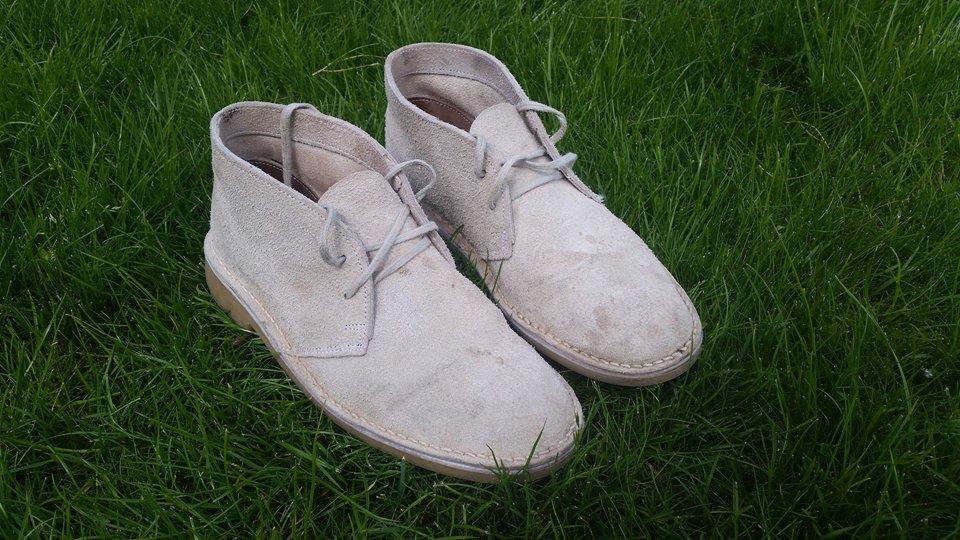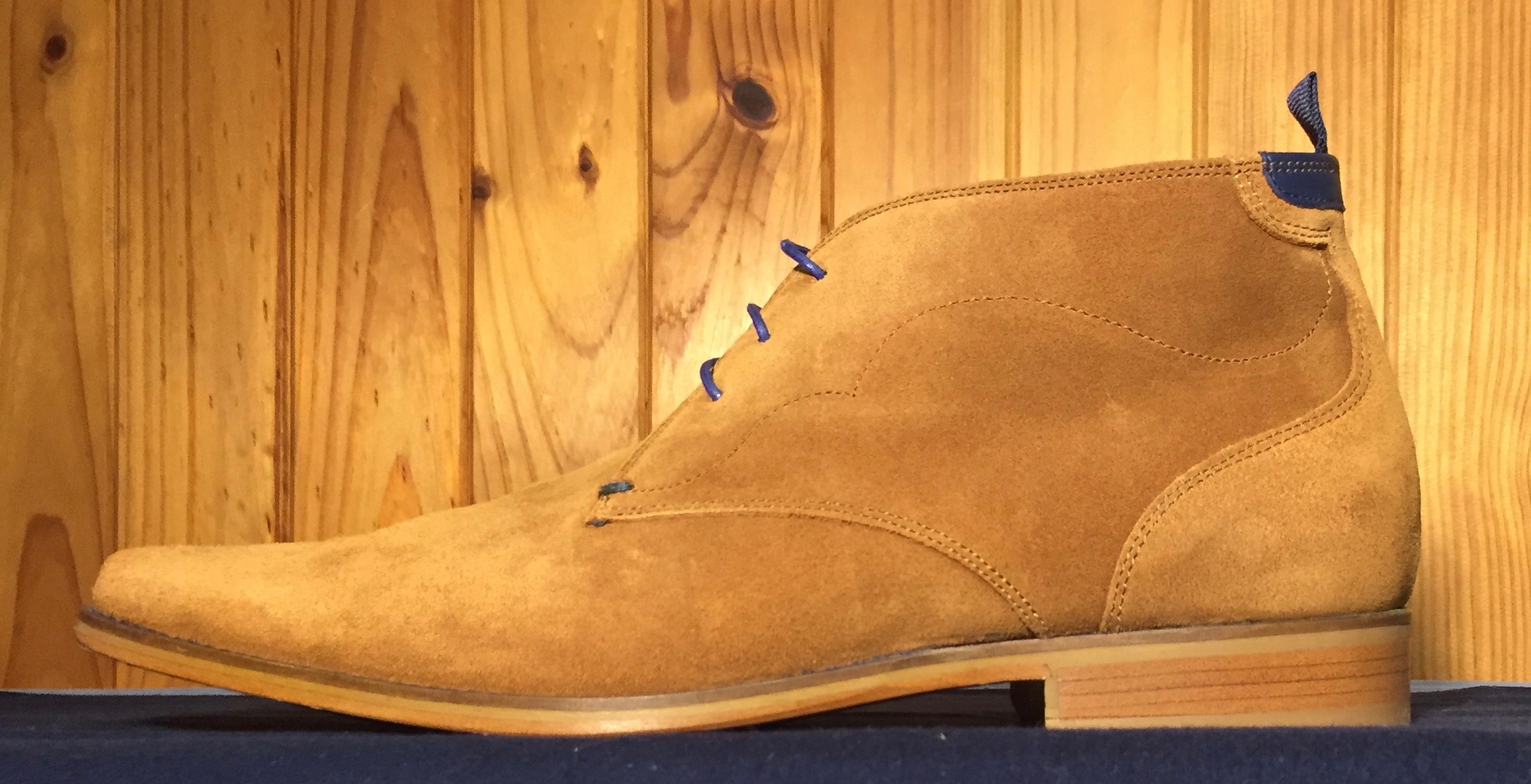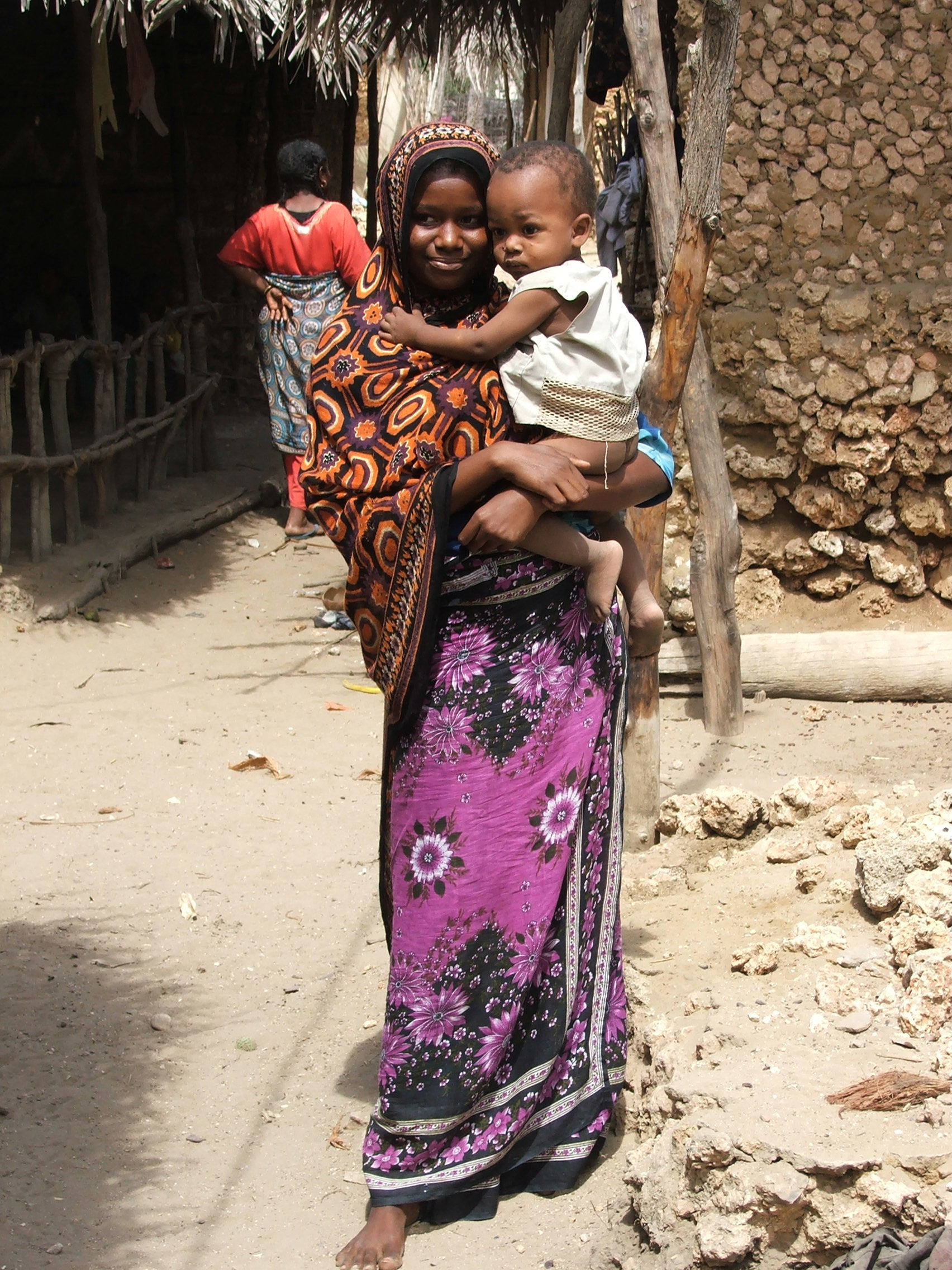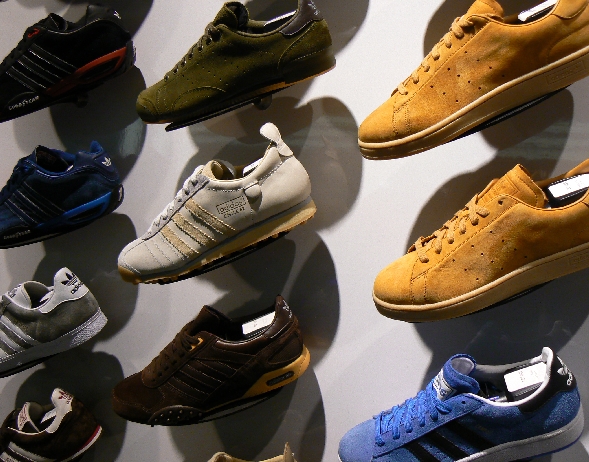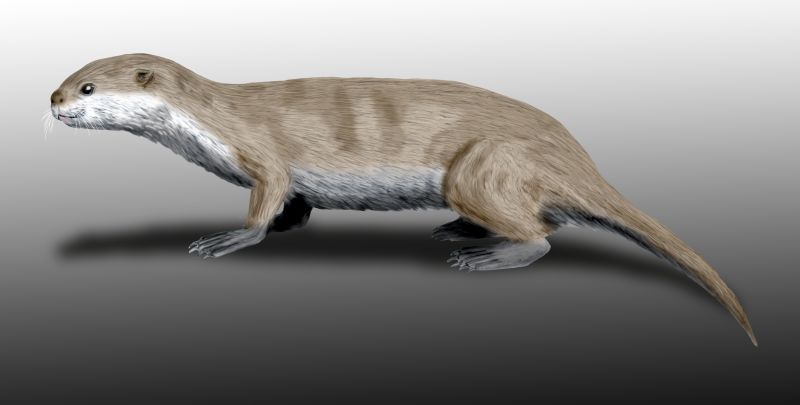|
Veldskoen
Veldskoene ("FELT-skoona") or colloquially vellies ("FELL-ys") are South African walking shoes made from vegetable-tanned leather or soft rawhide (material), rawhide uppers attached to a leather footbed and rubber sole by a method known as stitchdown construction, done without Shoe tack, tacks or nail (fastener), nails. History The name comes from Afrikaans vel ("skin"), later assimilated with veldt ("field"), and skoene ("shoes"). Their design is believed to be based on the traditional Khoisan footwear. The footwear was later embedded into the South African farming community when Velskoene were used as the footwear of choice. Easy to make, lightweight and extremely tough, Vellies became part of South African, Zimbabwean (previously Rhodesian) and Namibian and African culture. Nathan Clark's shoe company, C. & J. Clark, C&J Clark, made the desert boot famous, modeled after the same round toe and style of Veldskoene. Clark was inspired by the shape and design of Veldskoene he d ... [...More Info...] [...Related Items...] OR: [Wikipedia] [Google] [Baidu] |
Wupperthal
Wupperthal (sometimes also spelt Wuppertal) is a small town in the Cederberg mountains in the Western Cape province of South Africa. It was founded in 1830 by two German missionaries of the Rhenish Missionary Society (Rheinische Mission), Theobald von Wurmb and Johann Gottlieb Leipoldt, grandfather of C. Louis Leipoldt – some 100 years before the city of Wuppertal was formally established in Germany. In 1965, after the Rhenish Mission had gradually scaled down their activities in Southern Africa over a period of 40 years, a decision was taken that Wupperthal in future should become part of the Moravian Church, which by that stage had already made the transition from a mission to an autonomous church in South Africa. The town remains a Moravian mission station to this day. Village life The village remains isolated, and is accessible by a gravel road from Clanwilliam, Western Cape, Clanwilliam over the Pakhuis Pass. Community facilities include the Moravian Church, a shop, a te ... [...More Info...] [...Related Items...] OR: [Wikipedia] [Google] [Baidu] |
Chukka Boots
Chukka boots () are ankle-high leather boots with suede or leather uppers, leather, wooden or rubber soles, and open lacing, with two or three pairs of eyelets. The name ''chukka'' possibly comes from the game of polo, where a chukka is a period of play. Generally, "chukka boot" refers to a form of desert boots originally worn by British soldiers in the Western Desert Campaign of World War II. Materials and style Chukkas are usually made from calfskin or suede, although they can be made from other materials. The style first became popular in the late 1940s through the 1960s as casual wear. In the 21st century, chukkas persist as a popular menswear shoe, particularly in the United Kingdom. They can be worn with both suits and more casual wear like jeans. According to shoe historian June Swann, the essential chukka boot is ankle-high, open-laced, and unlined, with two to four pairs of eyelets, thin leather soles, calfskin suede uppers in two parts (each from a single piece ... [...More Info...] [...Related Items...] OR: [Wikipedia] [Google] [Baidu] |
Egypt
Egypt ( , ), officially the Arab Republic of Egypt, is a country spanning the Northeast Africa, northeast corner of Africa and Western Asia, southwest corner of Asia via the Sinai Peninsula. It is bordered by the Mediterranean Sea to northern coast of Egypt, the north, the Gaza Strip of Palestine and Israel to Egypt–Israel barrier, the northeast, the Red Sea to the east, Sudan to Egypt–Sudan border, the south, and Libya to Egypt–Libya border, the west; the Gulf of Aqaba in the northeast separates Egypt from Jordan and Saudi Arabia. Cairo is the capital, list of cities and towns in Egypt, largest city, and leading cultural center, while Alexandria is the second-largest city and an important hub of industry and tourism. With over 109 million inhabitants, Egypt is the List of African countries by population, third-most populous country in Africa and List of countries and dependencies by population, 15th-most populated in the world. Egypt has one of the longest histories o ... [...More Info...] [...Related Items...] OR: [Wikipedia] [Google] [Baidu] |
Afrikaans Words And Phrases
Afrikaans is a West Germanic language spoken in South Africa, Namibia and to a lesser extent Botswana, Zambia, Zimbabwe and also Argentina where there is a group in Sarmiento that speaks the Patagonian dialect. It evolved from the Dutch vernacular of South Holland (Hollandic dialect) spoken by the predominantly Dutch settlers and enslaved population of the Dutch Cape Colony, where it gradually began to develop distinguishing characteristics in the 17th and 18th centuries. Although Afrikaans has adopted words from other languages including German, Malay and Khoisan languages, an estimated 90 to 95% of the vocabulary of Afrikaans is of Dutch origin. Differences between Afrikaans and Dutch often lie in the more analytic morphology and grammar of Afrikaans, and different spellings. There is a large degree of mutual intelligibility between the two languages, especially in written form. Etymology The name of the language comes directly from the Dutch word (now spe ... [...More Info...] [...Related Items...] OR: [Wikipedia] [Google] [Baidu] |
African Clothing
African clothing is the traditional clothing worn by the people of Africa. African clothing and fashion is a diverse topic that provides a look into different African cultures. Clothing varies from brightly colored textiles, to abstractly embroidered robes, to colorful beaded bracelets and necklaces. Since Africa is such a large and diverse continent, Folk costume, traditional clothing differs throughout each country. For example, many countries in West Africa have a "distinct regional dress styles that are the products of long-standing textile crafts in weaving, dyeing, and printing", but these traditions are still able to coexist with western styles. A large contrast in African fashion is between rural and urban societies. Urban societies typically are exposed more to trade and the changing world, while it takes more time for new western trends to get to rural areas. By region In Northeastern Africa, particularly in Egypt, styles of traditional women's clothing have been inf ... [...More Info...] [...Related Items...] OR: [Wikipedia] [Google] [Baidu] |
South African Fashion
South is one of the cardinal directions or compass points. The direction is the opposite of north and is perpendicular to both west and east. Etymology The word ''south'' comes from Old English ''sūþ'', from earlier Proto-Germanic ''*sunþaz'' ("south"), possibly related to the same Proto-Indo-European root that the word ''sun'' derived from. Some languages describe south in the same way, from the fact that it is the direction of the sun at noon (in the Northern Hemisphere), like Latin meridies 'noon, south' (from medius 'middle' + dies 'day', ), while others describe south as the right-hand side of the rising sun, like Biblical Hebrew תֵּימָן teiman 'south' from יָמִין yamin 'right', Aramaic תַּימנַא taymna from יָמִין yamin 'right' and Syriac ܬܰܝܡܢܳܐ taymna from ܝܰܡܝܺܢܳܐ yamina (hence the name of Yemen, the land to the south/right of the Levant). South is sometimes abbreviated as S. Navigation By convention, the ''bottom or down-f ... [...More Info...] [...Related Items...] OR: [Wikipedia] [Google] [Baidu] |
List Of Shoe Styles
This is a list of shoe styles and designs. A shoe is an item of footwear intended to protect and comfort the human foot while doing various activities. Shoes are also used as an item of decoration. The design of shoes has varied enormously through time and from culture to culture, with appearance originally being tied to function. Additionally, fashion has often dictated many design elements, such as whether shoes have very high heels or flat ones. Contemporary footwear varies widely in style, complexity and cost. Shoemaking is the process of making footwear. Originally, shoes were made one at a time by hand. Traditional handicraft shoemaking has now been largely superseded in Quantity, volume of shoes produced by industrial mass production of footwear, but not necessarily in Quality (business), quality, attention to detail, or Artisan, craftsmanship. Shoe styles Shoe designers have described a very large number of shoe styles, including the following: * Abaca slippers * * * ... [...More Info...] [...Related Items...] OR: [Wikipedia] [Google] [Baidu] |
Pinniped
Pinnipeds (pronounced ), commonly known as seals, are a widely range (biology), distributed and diverse clade of carnivorous, fin-footed, semiaquatic, mostly marine mammals. They comprise the extant taxon, extant families Odobenidae (whose only living member is the walrus), Otariidae (the eared seals: sea lions and fur seals), and Phocidae (the earless seals, or true seals), with 34 extant species and more than 50 extinct species described from fossils. While seals were historically thought to have descended from two ancestral lines, molecular phylogenetics, molecular evidence supports them as a monophyletic group (descended from one ancestor). Pinnipeds belong to the suborder Caniformia of the order Carnivora; their closest living relatives are musteloids (Mustelidae, weasels, Procyonidae, raccoons, skunks and red pandas), having diverged about 50 million years ago. Seals range in size from the and Baikal seal to the and southern elephant seal. Several species exhibit ... [...More Info...] [...Related Items...] OR: [Wikipedia] [Google] [Baidu] |
Greater Kudu
The greater kudu (''Tragelaphus strepsiceros'') is a large woodland antelope, found throughout East Africa, eastern and southern Africa. Despite occupying such widespread territory (animal), territory, they are sparsely populated in most areas due to declining habitat, deforestation, and poaching. The greater kudu is one of two species commonly known as kudu, the other being the lesser kudu, ''T. imberbis''. Etymology Kudu ( ), or koodoo, is the Khoikhoi name for this antelope. ''Trag-'' (Greek) denotes a goat and ''elaphos'' (Greek) a deer. ''Strepho'' (Greek) means 'twist', and ''strepsis'' is 'twisting'. ''Keras'' (Greek) refers to the horn of the animal. Physical characteristics Greater kudus have a narrow Anatomy, body with long legs, and their coat (animal), coats can range from brown/bluish grey to reddish brown. They possess between 4 and 12 vertical white stripes along their torso. The head tends to be darker in colour than the rest of the body, and exhibits a small ... [...More Info...] [...Related Items...] OR: [Wikipedia] [Google] [Baidu] |
Crepe Rubber
Crepe rubber is coagulated latex that is rolled out in crinkled sheets and commonly used to make soles for shoes and boots but also a raw material for further processed rubber products. Processing After the collection of the latex milk, sodium sulphite (Na2SO3) or ammonia is added to prevent coagulation.''Manufacture of latex crepe rubber''pdf-document, Raw Rubber Process Development & Chemical Engineering Dept., Rubber Research Institute of Sri Lanka, Ratmalana, January 2016 When the latex arrives in the factory, sodium bisulphite (NaHSO3) or sodium metabisulphite (Na2S2O3) are added to prevent enzymatic reactions and discoloring. Sodium para toluene thiophenate (an aromatic mercaptan) is often added as a bleaching agent. Colloidal latex is then mixed with formic acid Formic acid (), systematically named methanoic acid, is the simplest carboxylic acid. It has the chemical formula HCOOH and structure . This acid is an important intermediate in chemical synthesis and ... [...More Info...] [...Related Items...] OR: [Wikipedia] [Google] [Baidu] |
